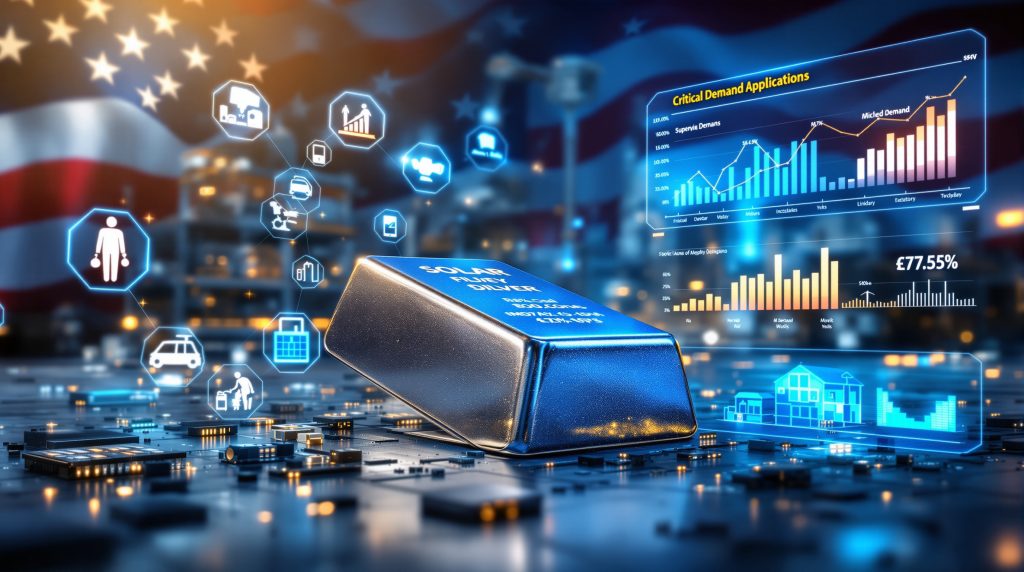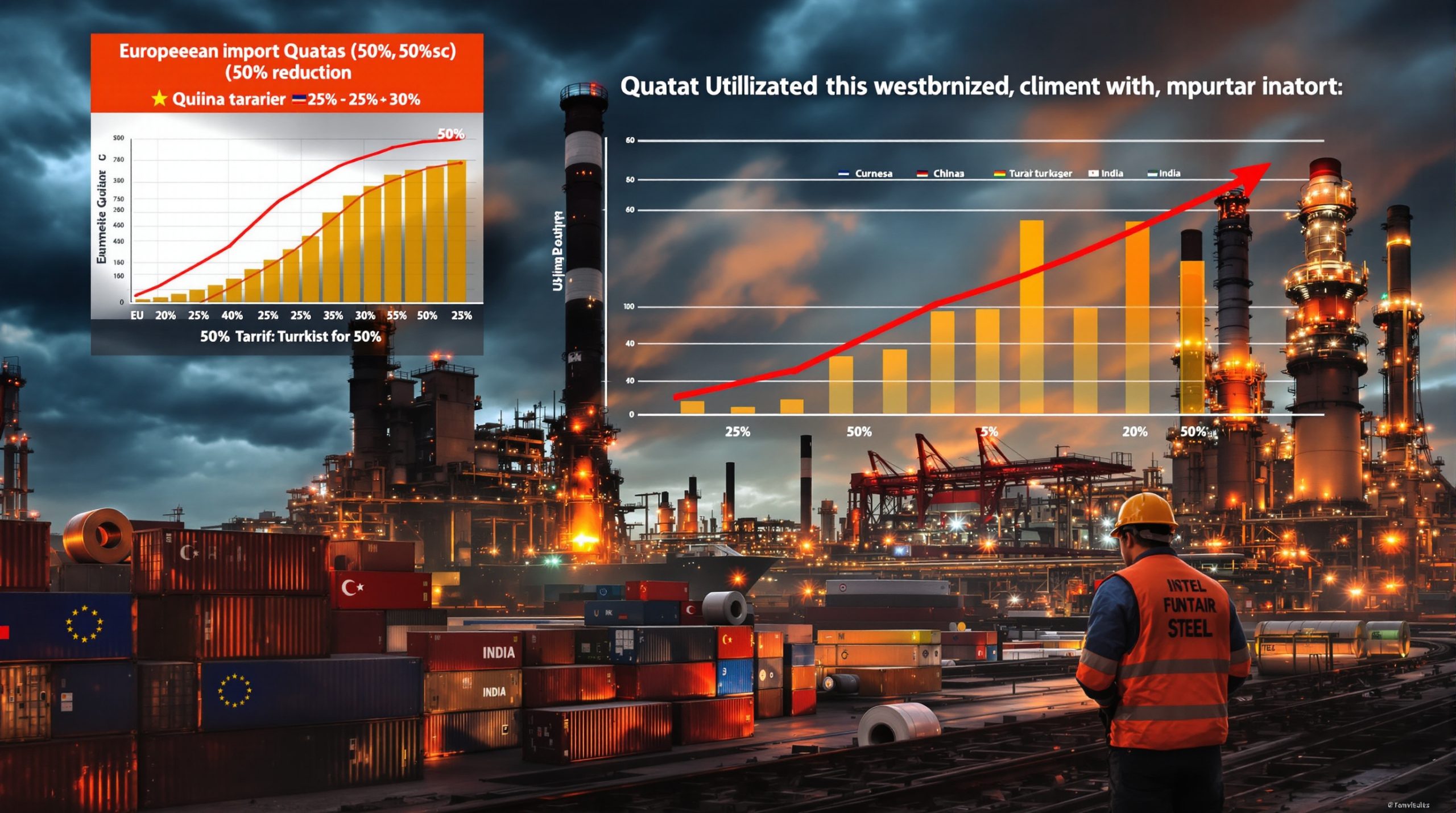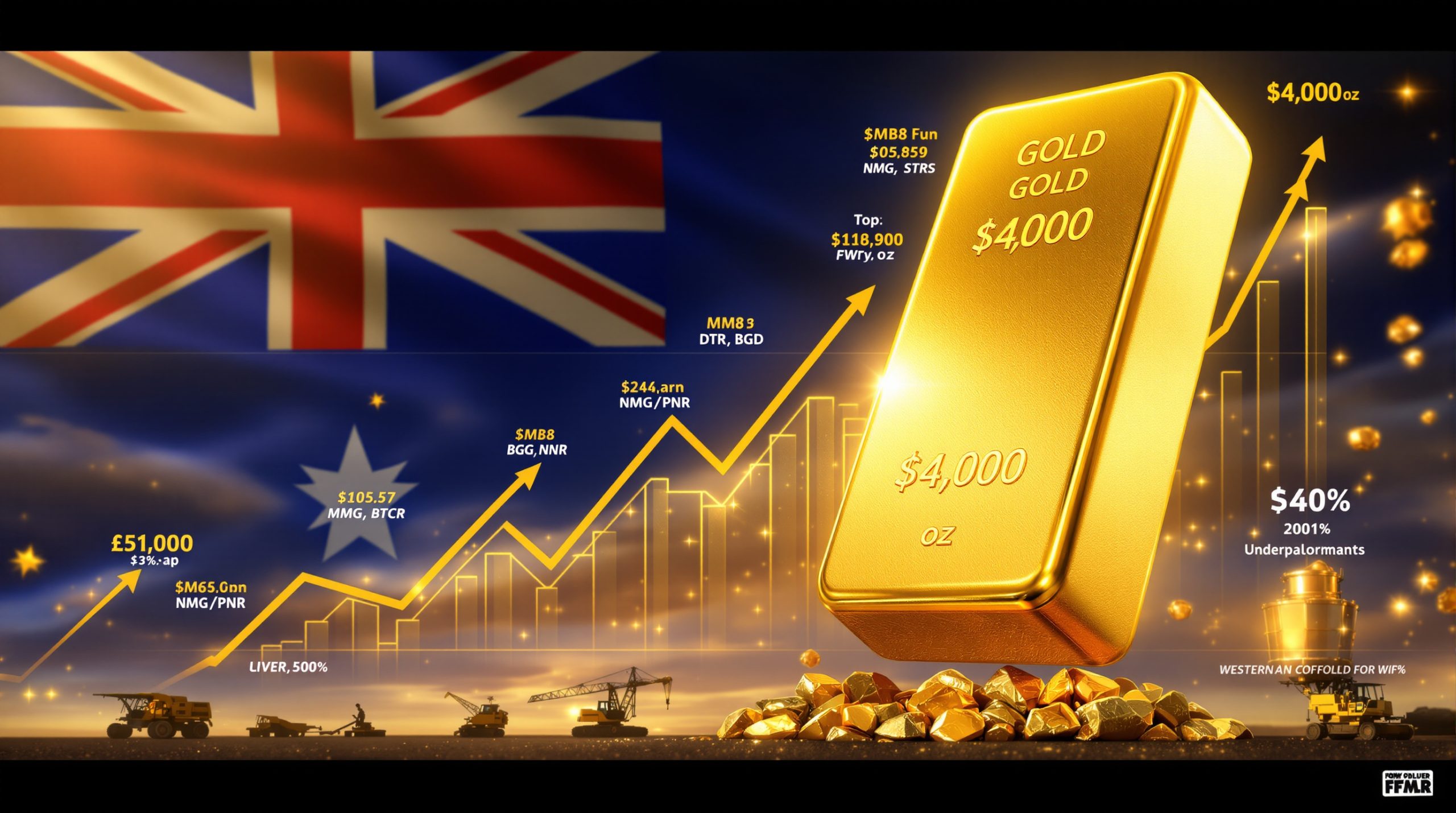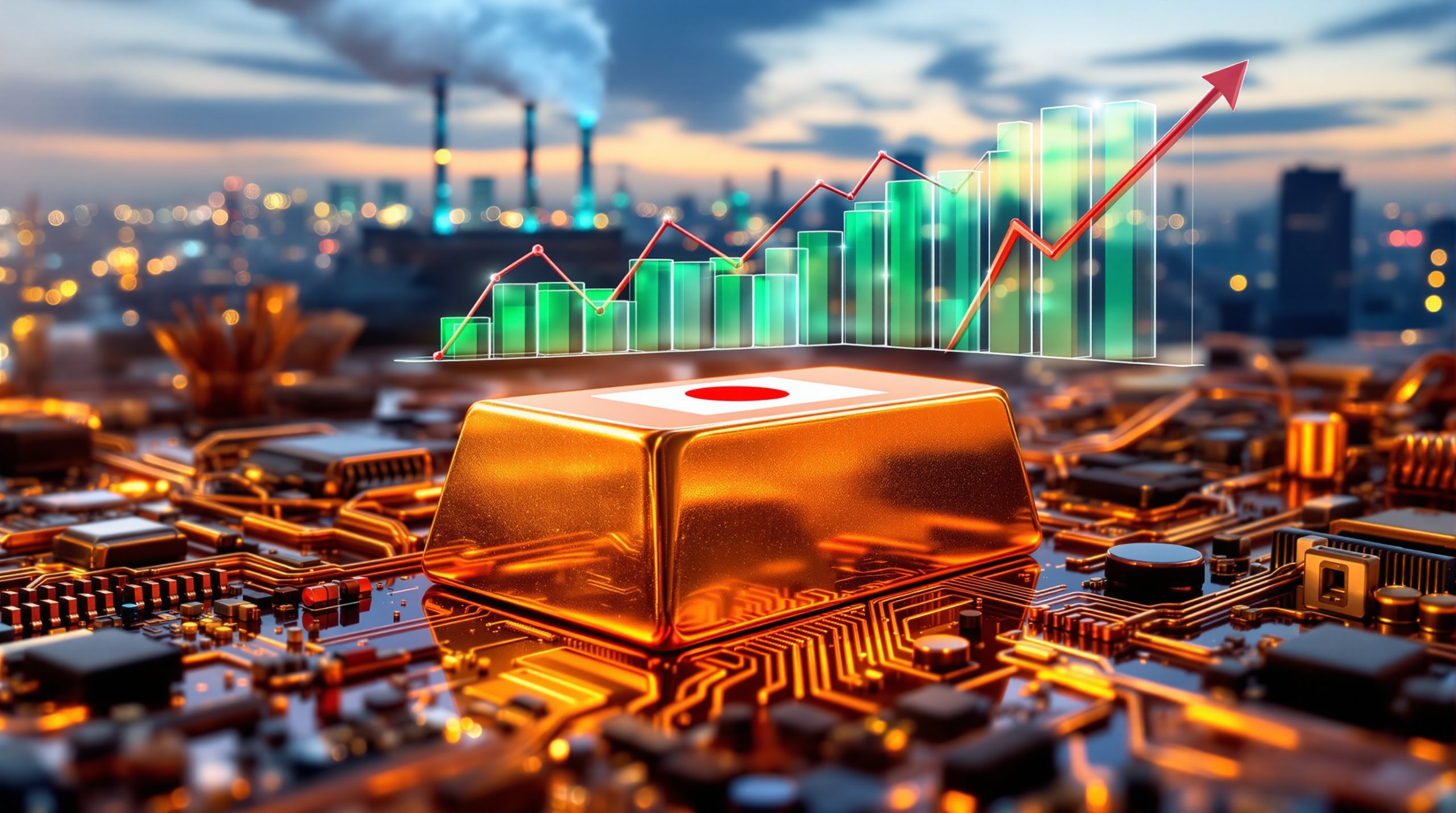Why Is Silver Now Considered a Critical Metal?
Silver has undergone a remarkable transformation in recent years, evolving from a traditional industrial and precious metal into a resource of strategic importance. This shift represents one of the most significant developments in the metals market, with profound implications for industries, investors, and national security frameworks.
The Official Designation Shift
The potential inclusion of silver on official critical minerals lists marks a watershed moment for this versatile metal. The criteria typically used to evaluate critical mineral status include supply vulnerability, economic importance, and application criticality—all areas where silver excels.
For a mineral to gain critical status, government agencies assess factors including import reliance, concentration of production, and the absence of viable substitutes. Silver meets these thresholds due to its high U.S. import dependency, which historically ranges between 67-80% of domestic consumption according to U.S. Geological Survey data.
This designation process typically involves input from multiple federal agencies, including the Department of Interior, Department of Defense, and Department of Energy, who evaluate minerals based on their importance to economic and national security interests.
Understanding Critical Mineral Classification
Critical minerals are defined as non-fuel minerals essential to economic and national security whose supply chains are vulnerable to disruption. This classification differs from "strategic" minerals, which specifically emphasize national defense applications.
The current U.S. framework for critical minerals builds upon Executive Order 13817 and the subsequent Critical Minerals Strategy, which established a formal methodology for evaluating mineral criticality based on quantitative metrics.
Silver's position is unique among critical minerals because it simultaneously functions as both a precious metal with monetary attributes and an industrial metal with irreplaceable technological applications. This dual identity creates distinctive market dynamics not seen with purely industrial metals like copper or lithium.
How Does Silver's Supply Chain Create Strategic Vulnerability?
The silver supply chain contains several structural vulnerabilities that have elevated concerns about long-term accessibility and price stability. These factors have contributed significantly to silver as critical metal consideration as a strategic resource.
Global Supply Concentration Risks
U.S. dependency on foreign silver sources creates inherent supply risks. According to historical U.S. Geological Survey data, the United States typically imports between 67-80% of its silver consumption, with Mexico serving as the primary supplier, followed by Canada, Poland, and other producing nations.
This geographic concentration of production presents vulnerability to supply disruptions stemming from various factors:
- Political instability in major producing regions
- Export restrictions imposed by producer governments
- Infrastructure challenges in mining regions
- Labor disputes affecting major mining operations
- Environmental regulations impacting production capacity
Historical precedents demonstrate how silver supply disruptions can trigger significant market impacts. In 2011, silver prices surged above $48 per ounce partly due to supply concerns combined with investment demand, showing how quickly the market can react to perceived shortages.
Production Challenges and Constraints
The silver production landscape faces several structural challenges:
- Byproduct Dependency: Approximately 70-80% of global silver production comes as a byproduct of base metal mining (primarily lead, zinc, copper, and gold), making silver supply heavily dependent on the economics of these primary metals
- Limited Primary Production: Pure silver mines represent only about 20-30% of global production, limiting the market's ability to respond quickly to increased demand
- Declining Ore Grades: Average silver ore grades have declined globally, requiring more energy and resources to extract the same amount of metal
- Production Concentration: Mexico, Peru, and China account for over 50% of global silver mine production, creating geopolitical risk factors
These supply constraints exist against a backdrop of growing industrial demand, creating a fundamental supply-demand imbalance that supports silver's critical status designation.
What Makes Silver Irreplaceable in Modern Technology?
Silver possesses a unique combination of physical properties that make it exceptionally difficult to substitute in many high-technology applications, despite ongoing efforts to reduce usage through technological innovation.
Unique Physical Properties
Silver's position at the top of the periodic table for several key properties makes it indispensable:
- Electrical Conductivity: Silver ranks as the most electrically conductive element with a rating of 63.0 × 10⁶ S/m at 20°C, approximately 7% more conductive than copper
- Thermal Conductivity: With a thermal conductivity of 429 W/m·K at room temperature, silver excels in applications requiring rapid heat dissipation
- Reflectivity: Silver reflects up to 99% of visible light when properly polished, making it ideal for optical applications
- Antimicrobial Properties: Silver ions disrupt bacterial cell membranes and enzyme systems, providing natural biocidal properties valuable in medical and consumer applications
These properties combine to create a material that cannot be fully replaced by alternatives in many critical applications, despite its relatively high cost compared to other industrial metals.
Critical Applications in Strategic Industries
Silver plays an essential role in numerous industries vital to economic growth and national security:
Renewable Energy Applications:
- Photovoltaic cells require silver for electrical contacts and conductive paste
- Approximately 10-20 grams of silver are used in each traditional silicon solar panel
- Next-generation solar technologies are working to reduce silver content while maintaining efficiency
Defense Technology Requirements:
- Military communications systems rely on silver's superior conductivity
- Aerospace applications utilize silver's thermal management properties
- Guidance systems benefit from silver's reliability in extreme conditions
- Naval systems employ silver for corrosion resistance in maritime environments
Electronics and Communications Infrastructure:
- 5G network infrastructure requires silver for high-frequency transmission components
- Printed circuit boards use silver for reliable connections in mission-critical systems
- RFID technology incorporates silver for its conductive properties
Medical Technology Applications:
- Surgical instruments contain silver for its antimicrobial properties
- Wound dressings incorporate silver to prevent infection
- Diagnostic equipment utilizes silver for reliable electrical connections
- Implantable medical devices benefit from silver's biocompatibility
The combination of these applications across multiple strategic sectors reinforces silver's irreplaceable status in the modern technological landscape.
How Is Silver Driving the Green Energy Transition?
The global shift toward renewable energy and sustainable transportation has positioned silver as a critical enabler of green technology, creating new demand vectors that amplify its strategic importance.
Solar Energy Dependency
The photovoltaic industry represents one of the largest and fastest-growing sources of industrial silver demand:
- Traditional crystalline silicon solar cells require silver paste for front and rear electrical contacts
- Each gigawatt of solar capacity installed historically required approximately 20-30 metric tons of silver
- Industry efforts to reduce silver intensity (thrifting) have made progress but cannot eliminate silver entirely due to performance requirements
- Emerging technologies like heterojunction cells may temporarily increase silver intensity before further optimization
The International Energy Agency and similar organizations project global solar capacity to grow substantially through 2030, potentially creating significant additional silver demand despite efficiency improvements in silver usage per panel.
Note: While solar manufacturers continue working to reduce silver content per panel, the exponential growth in total installed capacity is expected to more than offset these reductions in the medium term.
Electric Vehicle Revolution
Electric vehicles represent another major growth vector for silver consumption:
- Modern EVs contain significantly more silver than conventional vehicles
- Traditional internal combustion vehicles typically use 15-28 grams of silver
- Electric vehicles can contain 25-50 grams of silver in various electrical systems
- The metal is used in battery management systems, power electronics, and charging infrastructure
The automotive industry's accelerating transition toward electrification multiplies this effect across millions of vehicles annually. Major automakers have announced ambitious electrification targets that collectively will require substantial amounts of silver for production.
Key applications include:
- Battery management systems
- Electric power steering
- Safety systems and autonomous driving sensors
- Infotainment and connectivity components
- Charging infrastructure
This transportation revolution coincides with the solar expansion to create unprecedented industrial demand for silver outside its traditional use cases.
What Economic Implications Does Critical Status Create?
The recognition of silver's critical status has far-reaching implications for market dynamics, investment perspectives, and price discovery mechanisms in both short and long-term timeframes.
Market Pricing Dynamics
Silver's price behavior reflects its unique dual identity as both industrial commodity and monetary metal:
- Historical price performance shows silver typically outperforms gold during periods of industrial growth
- The Gold/Silver Ratio Analysis (how many ounces of silver equal one ounce of gold) has fluctuated significantly over time
- The ratio exceeded 120:1 during market disruptions but has historically reverted toward lower ratios during silver bull markets
- Industrial demand provides a fundamental price floor not present in purely monetary metals
The critical mineral designation potentially changes the way institutional investors view silver, shifting it from a volatile precious metal to a strategic resource with fundamental supply constraints and growing industrial demand.
Investment Landscape Transformation
The investment case for silver has evolved substantially with its increasing strategic importance:
- Institutional positioning has begun shifting toward larger silver allocations in diversified portfolios
- ETF and physical investment patterns show increased interest in silver as both an industrial play and inflation hedge
- The balance between investment and industrial demand creates unique market dynamics not seen in other metals
This evolution reflects growing recognition that silver serves multiple roles in a diversified portfolio—providing both precious metal exposure and participation in the green energy transition and technological advancement.
Investment strategies incorporating silver increasingly focus on its essential role in critical technologies rather than purely as an alternative to gold or speculative vehicle. This fundamental shift in perception supports a potential long-term revaluation of silver relative to other metals.
How Are Governments Responding to Silver's Critical Status?
Government responses to critical mineral supply challenges typically follow established patterns seen with other strategically important resources. As awareness of silver's critical applications grows, policy initiatives are likely to evolve accordingly.
Policy Initiatives and Incentives
Government approaches to securing critical mineral supplies generally include multiple policy tools:
- Streamlined permitting processes for domestic resource development
- Tax incentives to encourage exploration and production
- Research funding for recycling and material efficiency
- International agreements to diversify supply sources
- Strategic stockpile considerations for national security
These general approaches to critical minerals policy provide a framework for understanding how silver may be treated as its strategic importance gains wider recognition. Countries with significant domestic silver resources have particular incentive to develop supportive policies.
Domestic Production Stimulation
North American silver production presents opportunities for domestic supply expansion:
- The United States hosts significant silver resources, particularly in western states
- Silver often occurs alongside other critical minerals, creating exploration synergies
- Secondary recovery from electronic waste represents an underutilized source
- Technological innovations in mining and processing can unlock previously uneconomic deposits
Public-private partnerships focused on critical minerals have shown success in accelerating domestic production capabilities for other strategic resources. Similar models could potentially be applied to silver production and recycling initiatives.
Case studies of successful domestic production expansion for other critical minerals demonstrate the effectiveness of coordinated policy approaches in reducing import dependency over time.
What Supply-Demand Dynamics Are Shaping Silver's Future?
The interplay between accelerating industrial demand and constrained supply growth creates a fundamental framework for understanding silver's long-term market outlook.
Industrial Demand Acceleration
Multiple sectors are driving increased silver consumption:
- Electronics sector growth: Miniaturization has reduced silver content per device, but exponential growth in total devices has more than offset this effect
- Automotive transformation: The transition to electric vehicles creates additional silver demand per vehicle
- Renewable energy expansion: Solar deployment continues setting new records globally
- Medical applications: Healthcare devices increasingly utilize silver's antimicrobial properties
These demand vectors operate simultaneously against a backdrop of limited supply growth, creating potential for structural deficits over the medium to long term.
Technological efforts to reduce silver intensity (thrifting) continue across industries, but many applications have reached practical limits where further reductions compromise performance. This creates a floor for industrial consumption even as efficiency improves.
Investment Demand Factors
Silver's investment case combines multiple attributes:
- Monetary history: Silver's 5,000-year history as a monetary metal provides a psychological foundation
- Inflation response: Historical price behavior during inflationary periods shows silver typically outperforms most asset classes
- Industrial exposure: Unlike gold, silver provides direct exposure to technological growth sectors
- Relative valuation: Silver remains inexpensive relative to gold by historical standards
The investment thesis for silver has evolved beyond its traditional role as "poor man's gold" to incorporate its strategic importance in the green energy transition and technological advancement. This evolution potentially creates a more diversified demand base that supports long-term price appreciation.
How Does Silver Compare to Other Critical Minerals?
Silver occupies a unique position among critical minerals due to its dual identity as both precious and industrial metal, creating market dynamics not seen with purely industrial commodities.
Comparative Strategic Importance
When analyzed alongside other critical minerals, silver demonstrates distinctive characteristics:
| Metal | Primary Applications | Supply Risk Factors | Substitutability |
|---|---|---|---|
| Silver | Electronics, Solar, Medical | Byproduct dependency, Geopolitical concentration | Limited in most applications |
| Copper | Electrical infrastructure, Construction | Grade decline, Water constraints | Moderate with aluminum in some uses |
| Lithium | Batteries, Ceramics | Processing bottlenecks, Project delays | Very limited for batteries |
| Rare Earths | Magnets, Electronics | China dominance, Processing complexity | Limited in high-performance applications |
Silver's cross-sector applications provide broader economic exposure than most critical minerals, which tend to be concentrated in specific industries. This diversification potentially reduces vulnerability to sector-specific downturns.
Diversification Within Critical Mineral Portfolios
Silver offers distinctive portfolio characteristics when combined with other critical resources:
- Correlation patterns with industrial metals tend to be moderate rather than high
- Precious metal component provides counter-cyclical behavior during economic uncertainty
- Monetary aspects create differentiated market behavior during financial stress
- Historical price volatility offers higher risk-adjusted return potential in certain market environments
These attributes make silver a potential complementary holding alongside other critical minerals in resource-focused investment strategies. The combination of industrial utility and monetary heritage creates a unique risk-return profile not replicated by other commodities.
What Are the Long-Term Implications of Silver's Critical Status?
The recognition of silver's strategic importance potentially triggers a cascade of long-term changes across markets, policies, and industrial planning horizons.
Strategic Resource Management Evolution
Historical precedents from other materials that gained critical status suggest a predictable evolution:
- Initial recognition phase focuses on quantifying vulnerabilities
- Policy development phase creates incentives for domestic production
- International coordination emerges to address shared supply concerns
- Private sector investment accelerates in response to policy signals
- Technology development focuses on efficiency and recycling
These patterns have been observed with rare earth elements, lithium, and other materials that transitioned from commodity status to strategic importance. Silver's path may follow similar contours while reflecting its unique dual identity.
Market Structure Transformation
Critical status potentially transforms silver market structures over time:
- Price discovery mechanisms may evolve to better reflect strategic value
- Transparency initiatives could address current information gaps in supply chains
- Long-term contracting might increase as industrial users secure supplies
- Investment vehicles may differentiate between silver as monetary asset versus industrial input
These structural changes would represent a maturation of the silver market from its historical roots toward a more sophisticated market reflecting its essential role in modern technology.
FAQ: Silver as a Critical Metal
What exactly makes silver "critical" versus just "important"?
Critical mineral status is determined through a formal evaluation process examining three primary factors:
- Supply vulnerability: High import reliance, concentrated production sources, and geopolitical risks
- Economic significance: Essential roles across multiple industries with limited substitutes
- National security implications: Applications in defense technologies and critical infrastructure
Silver meets these criteria through its concentrated production (primarily as a byproduct), high U.S. import dependency, and irreplaceable role in strategic technologies including defense systems, renewable energy, and advanced electronics.
The designation represents a formal recognition that disruptions to silver supply would have cascading effects across multiple sectors essential to economic and national security interests.
How does silver's critical status affect mining companies?
Mining companies potentially benefit from critical mineral status through several mechanisms:
- Permitting advantages: Projects producing critical minerals often receive expedited review
- Financial incentives: Tax benefits, grants, and other support mechanisms typically target critical mineral production
- Investment interest: Increased institutional focus on companies producing strategically important materials
- Government partnerships: Opportunity for public-private collaboration on supply security initiatives
These advantages particularly benefit primary silver producers and companies developing new silver projects, as they represent potential domestic supply sources for a strategically important material.
Will silver's critical designation affect its price and availability?
Critical mineral designations typically influence markets through several channels:
- Industrial user behavior: Forward purchasing and inventory building to secure supplies
- Investment perspective: Increased institutional interest in securing exposure
- Production incentives: Policy support potentially accelerating new supply development
- Price volatility: Potentially higher during periods of perceived shortage
Historical precedents with other critical minerals suggest a gradual revaluation process rather than immediate price shocks, as markets adjust to the new strategic framework. Long-term contracts and strategic partnerships often emerge as mechanisms to manage price volatility and ensure availability.
How does silver compare to gold in terms of strategic importance?
Silver and gold present distinctly different strategic profiles:
- Industrial utility: Silver has extensive irreplaceable industrial applications, while gold's industrial use is limited
- Supply dynamics: Silver production is predominantly a byproduct, while gold is mostly produced as a primary product
- Substitutability: Silver faces few viable substitutes in critical applications, while gold can often be replaced
- Consumption versus investment: Silver is consumed industrially in non-recoverable applications, while most gold ever mined remains in circulation
These differences create fundamentally different supply-demand dynamics. Gold's strategic importance derives primarily from its monetary role and universal acceptance, while silver's criticality stems from its irreplaceable technological applications combined with supply vulnerabilities.
What Geological Factors Affect Silver Supply?
The geological characteristics of silver deposits significantly influence production capabilities and supply reliability.
Deposit Types and Distribution
Silver occurs in several distinct geological settings:
- Epithermal deposits: Formed near surface from hydrothermal fluids, these often contain high-grade silver
- Porphyry deposits: Typically copper-dominant with silver as a byproduct
- Sedimentary exhalative (SEDEX) deposits: Lead-zinc deposits with associated silver
- Volcanogenic massive sulfide (VMS) deposits: Polymetallic deposits often containing silver
The geographical distribution of these deposit types creates natural concentration of production in specific regions, particularly the "Silver Belt" running through North and South America from Canada to Chile.
Declining Ore Grades and Mining Challenges
A fundamental challenge facing silver production is the global decline in ore grades:
- Average silver mine grades have fallen substantially over decades
- Lower grades require processing more ore to produce the same amount of metal
- Energy and water requirements increase as grades decline
- Economic viability becomes more sensitive to price fluctuations
This declining grade trend represents a structural challenge for silver supply growth, as new discoveries rarely match the richness of historical silver districts that have been extensively mined. Additionally, silver tariff impacts can further complicate the economic viability of mining operations.
How Does Recycling Contribute to Silver Supply?
Secondary recovery represents an important component of the silver supply chain with potential for expansion.
Current Recycling Contributions
Recycling currently provides approximately 15-20% of annual silver supply, derived from several sources:
- Industrial scrap: Manufacturing waste and production residues
- Electronic waste: Recovery from discarded devices and components
- Photographic materials: Diminishing source as digital technology replaces film
- Jewelry and silverware: Recycling of consumer products
The recycling rate varies significantly by application, with some industrial uses having high recovery rates while others result in permanent losses. The silver market squeeze has highlighted the importance of recycling as a supply source during periods of high demand.
Technological Innovations in Recovery
Emerging technologies are improving silver recycling economics:
- Advanced separation techniques increase recovery percentages
- Hydrometallurgical processes reduce environmental impacts
- Automated disassembly systems improve economics for electronic waste
- Urban mining concepts target silver-rich waste streams
These innovations potentially unlock previously uneconomic secondary sources, helping to mitigate primary supply constraints over the long term. The silver squeeze movement has also created greater awareness about the importance of silver recycling and conservation.
Following any market disruption, silver crash recovery typically involves increased recycling activity as higher prices incentivize collection and processing of secondary sources. This natural market response helps balance supply and demand during periods of shortage or price volatility.
Want to Capitalise on the Next Major Mineral Discovery?
Stay ahead of the market with Discovery Alert's proprietary Discovery IQ model, which instantly notifies investors about significant ASX mineral discoveries and transforms complex data into actionable insights. Explore why historic discoveries generate substantial returns by visiting the dedicated discoveries page and start your 30-day free trial today.




